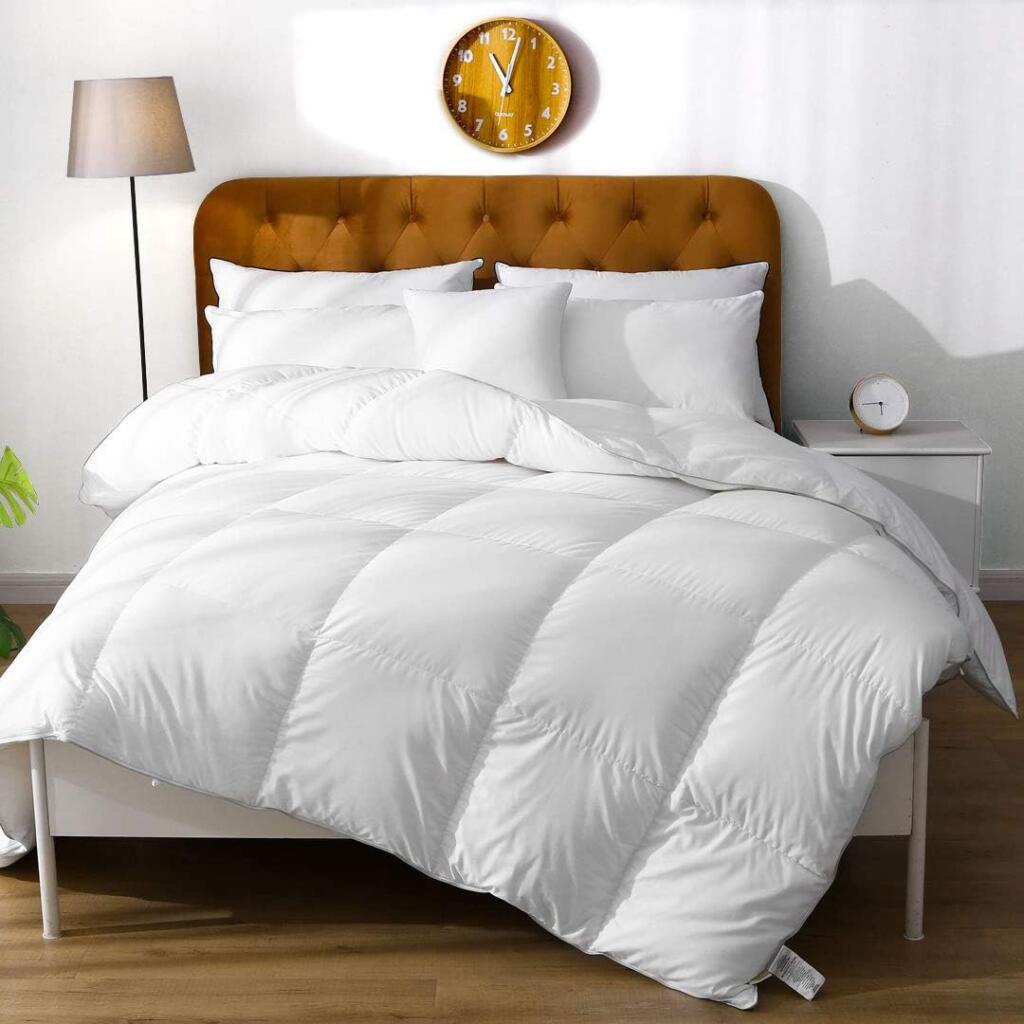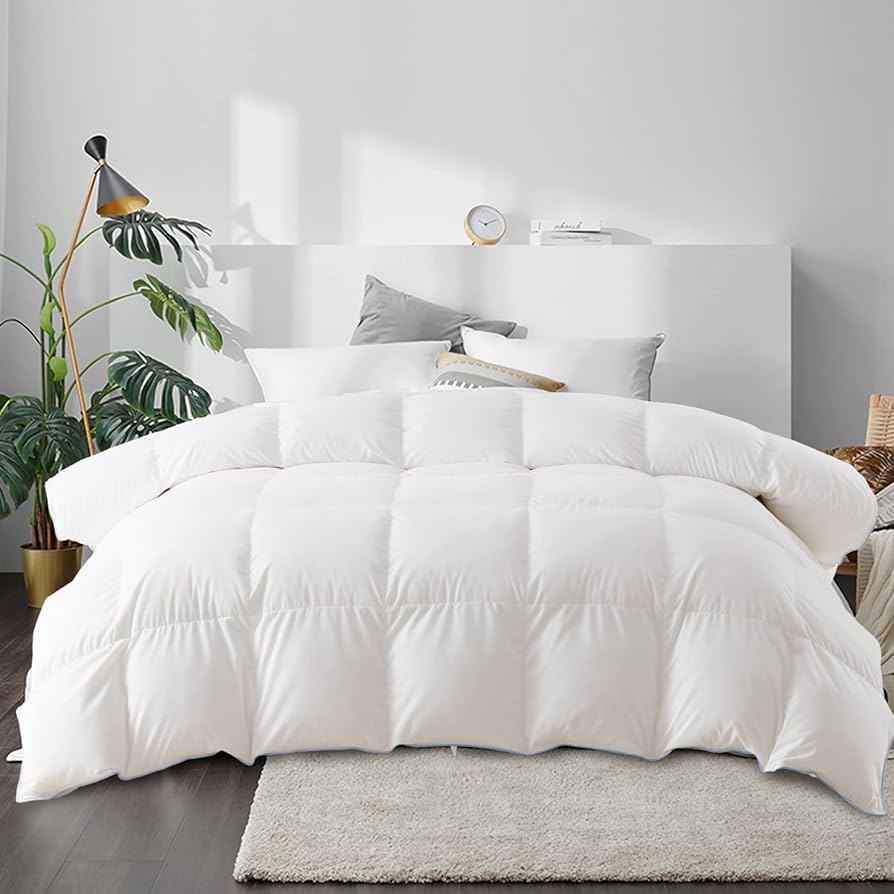
A comforter which is known by different names in different regions such as doona, Quilt or duvet in UK, with dubet being thicker and used as cover etc. It is a variant of bedding which composed of two fabric layers. It is stitched together and filled with solitary materials such as down, feather, wool, cotton silk and other synthetic fibers. It is used to cover body while seelping and often placed over the top of bed sheet.
Comforters are available in various thicknesses for different seasons and are sold in sizes corresponding to bed sizes: Twin (64 x 87 in), Queen/Full (87 x 87 in), and King (101 x 90 in). They are sometimes sold in “bed in a bag” sets, which include matching sheets and pillowcases.
What is a Comforter?
If you’re not getting a cool night’s sleep or you’re tired of the many bedding you have, you may need a new comforter. Sometimes, during the cold season, you feel like choosing the right comforter becomes unbearably complicated and laborious because of how many variations there can be.
How can we choose the best comforter among so many variations in terms of type, filling method, thread count, fabric, and weight? We’ve discussed all the issues related to comforters, including: what a comforter is, what it is used for, and what difficulties to look out for when buying one.
What is a bed comforter?
A comforter is a type of bed cover, which is lightweight and decorative in style. It is a heavy and soft decorative blanket used over a tucked away sheet. The comforter is mostly placed over a flat blanket or sheet. TheFashionEntrepreneur has often been considering the need to protect the most prized possession – the comforter. The filling of the comforter will be made from poly or a poly-cotton blend as these are inexpensive and the filling will be of a uniform, even distribution, and needle-stitched or stitched into a design. They are usually fitted with soft, flexible outer covers of porous fabrics.
Also, coordinating items such as sheets, pillow covers, bed skirts and more that are all made for the same bed size are usually sold with the comforter either in bedding sets or bed-in-a-bag sets. Comfortable and decorative comforters bring style and warmth to further design the ideal bedroom. Quicksand is less likely to get dirty, which reduces the need for frequent washing, especially when used with sheets. It is important to follow the manufacturer’s instructions as many people are also wondering about washing care as this can vary greatly depending on the material used. Most of them can be machine washed and dried on low heat after which they can also be hung dried.


How to wash a comforter?
Read the care label: All specific cleaning requirements, special instructions, and standard operating procedures must be complied with. In this case you can only take it to a professional dry cleaner.
- Pre-treat stains: Any obvious stains on the garment must be removed using detergent before the actual wash.
- Use a large washer: If the comforter goes through a small washer at home, a large washer should be used in commercial places.
- Choose a gentle detergent: Regular washing powder can be harmful to the fabric, using special detergent that will not damage the fibers.
- Wash in cold water: Warm/hot water will shrink your garment further.
- Select the gentle cycle: It is better to use the gentle cycle when washing such garments to avoid stretching the fabric.
- Rinse thoroughly: Remove all traces of detergent used in the wash cycle.
- Dry on low heat: Spin the comforter in the dryer on low heat to dry the duvet completely. To avoid lumps, add clean tennis balls/dryer balls while drying.
What to keep in mind when buying a comforter?
There are several things to consider when choosing the right comforter that can greatly impact your sleeping habits. Here are some factors you should consider:
Material:
- Down: Soft, fluffy, excellent insulation.
- Eucalyptus: Soft, down-like, temperature-regulating.
- Cotton: Plush, breathable.
- Wool: Heavy, cozy, good for warmth.
Fill Power:
- 400 or below: Summer or warmer sleepers.
- 400-600: Versatile for all seasons.
- 600-800: Warm for winter or cold sleepers.
- 800 and up: Extremely warm with cold weather.
Size:
- Choose a comforter at least 2 inches larger than your mattress to ensure proper coverage.
Cost:
- Higher prices don’t always mean better quality. Consider materials and alternatives like down substitutes for a budget-friendly option.
Stuffing and Weather:
- Summer: Lighter fillings like cotton or silk.
- Winter: Heavier fillings like down or wool. Choose based on local climate and temperature.
Thread Count:
- Higher thread count can trap down better. Aim for 300-500, but prioritize fiber quality and construction.
What’s the difference between a duvet and a comforter?
Many people put duvets and comforters in the same category or think they are same but there are various Differences:
A duvet is a type of bed cover that has a cover into which the duvet is tucked while a comforter is made of a single sheet of bedclothes. They are smaller and cooler than duvets and can therefore be used in all seasons. Comparatively, plain woolen blankets and comforters are thinner than duvets. You won’t find it difficult to find matching blankets as these are available in various colours and patterns appealing to different generations and aesthetics. While comforters are more likely to come in bold patterns and colours that can change the image of your bed, a duvet will take the chaste minimalist approach with plain simple patterns.

